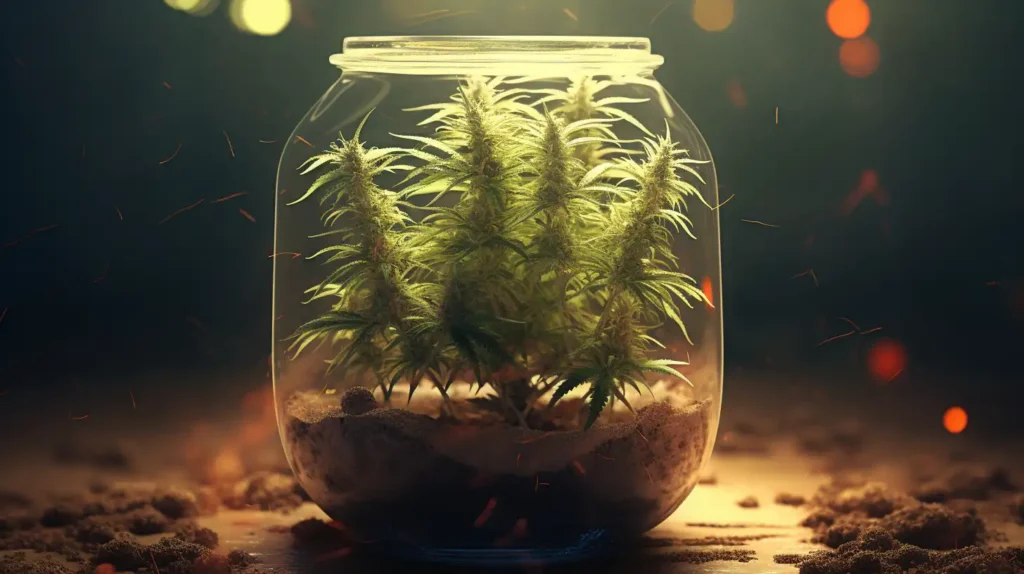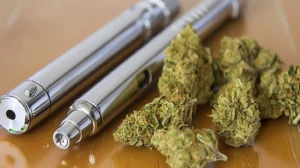Introduction to Growing Cannabis for Medical Use
With the increasing legalisation of medical cannabis, more and more patients are turning to growing their own supply for personal use. However, growing cannabis for medical purposes requires careful consideration of legal and regulatory aspects. As a professional and trustworthy source, we aim to provide guidelines for legally growing cannabis for medical use.
What is Medical Cannabis?
Medical cannabis, also known as medical marijuana, is the use of the cannabis plant or its extracts to treat various medical conditions. It contains chemical compounds called cannabinoids, which have been found to have therapeutic effects on the body.
What are the Different Types of Medical Cannabis?
There are two main types of medical cannabis: tetrahydrocannabinol (THC) dominant and cannabidiol (CBD) dominant. THC-dominant strains are known for their psychoactive effects and are often used for pain relief and relaxation. CBD-dominant strains, on the other hand, are non-psychoactive and are commonly used for treating conditions such as inflammation, epilepsy, and anxiety.
Legal Considerations for Growing Medical Cannabis
Before beginning to grow medical cannabis, it is important to understand the regulations and legal requirements in your area. The laws surrounding medical cannabis can vary greatly between countries and states, so it is crucial to do thorough research and consult with legal professionals.
What are the Regulations for Growing Medical Cannabis?
In countries where medical cannabis is legal, there are usually regulations in place to ensure safe and responsible use. These may include limits on the number of plants that can be grown, requirements for obtaining a licence, and restrictions on where the plants can be grown.
What are the Legal Requirements for Growing Medical Cannabis?
In addition to regulations, there are also legal requirements for growing medical cannabis. These may include obtaining a medical cannabis licence, adhering to security protocols, and keeping detailed records of the cultivation process.
Steps for Legally Growing Medical Cannabis
If you are legally allowed to grow medical cannabis, here are the general steps to follow:
- Step 1: Obtain a Medical Cannabis Licence – The first step is to obtain a licence for growing medical cannabis. This may involve submitting an application and undergoing a background check.
- Step 2: Choose a Suitable Location for Growing – It is important to choose a location that is secure, discreet, and meets any legal requirements. This may include setting up a designated grow space indoors or in a greenhouse.
- Step 3: Understand the Growing Process – Before starting, it is essential to have a good understanding of the growing process, including techniques for germination, watering, lighting, and harvesting.
- Step 4: Purchase Quality Seeds or Clones – Quality seeds or clones are essential for a successful and healthy harvest. It is recommended to purchase from reputable sources.
- Step 5: Create an Ideal Growing Environment – The environment plays a crucial role in the growth of medical cannabis. Factors such as temperature, humidity, and lighting must be carefully controlled to ensure optimal growth.
- Step 6: Monitor and Maintain the Plants – Regular monitoring and maintenance of the plants are crucial to ensure they are healthy and free from pests or diseases.
Benefits of Growing Medical Cannabis
There are several benefits to growing medical cannabis for personal use:
- Personalised Treatment – By growing your own medical cannabis, you have full control over the strains and methods used, allowing for a personalised treatment plan.
- Cost Savings – Growing your own medical cannabis can be more cost-effective in the long run compared to purchasing from dispensaries.
- Quality Control – By growing your own, you have control over the quality of the plants and can ensure they are grown without harmful chemicals.
Conclusion: Growing Medical Cannabis for Legal and Safe Use
Growing medical cannabis for personal use can be a beneficial option for patients. However, it is essential to understand and follow the legal and regulatory requirements in your area to ensure safe and responsible cultivation. With proper knowledge and precautions, growing medical cannabis can provide patients with a personalised, cost-effective, and high-quality treatment.
Key Points:
1. Understanding the legal considerations and regulations for growing medical cannabis is crucial for compliance and safety.
2. Obtaining a medical cannabis licence and creating an ideal growing environment are key steps in legally growing high-quality medical cannabis.
3. Growing medical cannabis for personal use can offer benefits such as personalised treatment, cost savings, and quality control.
What is Medical Cannabis?
Medical cannabis refers to the use of the cannabis plant and its cannabinoids to alleviate symptoms and treat various conditions.
What is medical cannabis? It involves utilizing cannabis or its extracts to manage conditions such as chronic pain, multiple sclerosis, epilepsy, and chemotherapy-induced nausea. The active compounds in cannabis, such as THC and CBD, are known for their therapeutic effects. Patients can consume medical cannabis through various forms, including oils, capsules, vaporization, and edibles. It’s essential to follow legal guidelines and obtain prescriptions from authorized healthcare professionals to ensure safe and legal access to medical cannabis. Understanding the specific laws and regulations in your region is crucial before considering medical cannabis as a treatment option.
What are the Different Types of Medical Cannabis?
Medical cannabis comes in various types tailored to address specific medical conditions. Understanding what the different types of medical cannabis are can help patients find the most suitable treatment.
Indica: Known for its relaxing properties, indica strains are ideal for managing pain, anxiety, and insomnia.
Sativa: This type offers an energizing effect, making it suitable for addressing conditions like depression, fatigue, and ADHD.
Hybrid: Combining indica and sativa, hybrids provide a balanced effect, offering relief for a wide range of symptoms.
CBD-dominant strains: These are non-intoxicating and serve as an option for patients seeking relief without the psychoactive effects.
THC-dominant strains: With higher THC content, these strains are effective for managing conditions such as nausea, muscle spasticity, and low appetite.
When considering what the different types of medical cannabis are, consulting with a healthcare professional can help determine the most appropriate strain based on individual medical needs and symptom management.
Legal Considerations for Growing Medical Cannabis
When legally growing medical cannabis, it’s crucial to understand the legal considerations for compliance. Adhering to local laws and regulations is essential to avoid legal implications. Secure the necessary permits and licenses, and ensure the cultivation location meets zoning requirements. Understand the limitations on the quantity of plants allowed for personal medical use, and be informed about the legal restrictions on selling or distributing the harvested cannabis. Additionally, stay updated on any changes to the legal framework surrounding medical cannabis cultivation to maintain compliance with the law.
What are the Regulations for Growing Medical Cannabis?
The regulations for growing medical cannabis vary by region and are subject to change. It’s crucial to stay updated with local laws and regulations to ensure compliance. Typically, regulations cover aspects such as the number of plants allowed, security measures, and licensing requirements.
For instance, in some areas, a limited number of plants are permitted for personal medical use, while commercial cultivation may require specific permits and security protocols. Prioritise understanding zoning laws, building codes, and any restrictions on the cultivation location. To comply with regulations, obtain the necessary licences and permits before initiating any growing activities. Engaging legal counsel or consulting regulatory agencies can provide clarity on the specific regulations in your area.
Always maintain transparency and accountability in adhering to the regulations for growing medical cannabis.
What are the Legal Requirements for Growing Medical Cannabis?
The legal requirements for growing medical cannabis encompass adherence to specific regulations and standards. These requirements typically include:
- Obtaining a medical cannabis license
- Selecting an appropriate cultivation location
- Understanding the precise growing procedures
- Procuring high-quality seeds or clones
- Creating an optimal growing environment
- Consistently monitoring and maintaining the plants
Additionally, compliance with local laws and regulations regarding security measures, plant limits, and record-keeping is crucial. It is vital to stay updated on the evolving legal landscape and seek legal counsel to ensure full compliance with all legal requirements. As the laws and regulations can vary across different regions, aspiring growers must thoroughly research and understand the specific legal prerequisites in their area before commencing any cultivation activities.
Steps for Legally Growing Medical Cannabis
Growing cannabis for medical use is a regulated and carefully monitored process. In this section, we will discuss the necessary steps for legally growing medical cannabis. These steps are crucial for ensuring compliance with laws and regulations, as well as producing high-quality, safe plants for medical use. From obtaining a medical cannabis license to creating an ideal growing environment, each step plays a crucial role in the success and legality of the process. So let’s dive in and learn more about the steps involved in growing medical cannabis for legal purposes.
Step 1: Obtain a Medical Cannabis Licence
Research the specific requirements and application process for obtaining a medical cannabis license in your region. Complete the necessary forms and provide all essential documentation, such as identification, background checks, and business plans if applicable. Submit the application to the designated regulatory agency and ensure compliance with all submission guidelines. Pay any associated fees or costs related to the application process. Prepare for a potential waiting period as the regulatory agency reviews and processes the application. Upon approval, carefully review the terms and conditions of the license and ensure ongoing compliance with all regulations.
Step 2: Choose a Suitable Location for Growing
When choosing a suitable location for growing medical cannabis, consider the following steps:
- Assess the space: Determine the available area and select a location that provides ample space for the plants to grow without overcrowding.
- Light exposure: Choose an area with access to natural light or invest in high-quality artificial lighting systems to ensure the plants receive adequate light for optimal growth.
- Temperature and humidity control: Select a location that allows for easy regulation of temperature and humidity levels to create an ideal growing environment.
- Security measures: Prioritise security by choosing a location that can be easily monitored and secured to prevent unauthorised access and ensure the safety of the plants.
It’s essential to carefully evaluate each potential location to ensure it meets the specific requirements for successfully growing medical cannabis.
Step 3: Understand the Growing Process
Research: Study the cannabis plant’s growth stages, from germination to flowering. Utilise reliable sources like agricultural guides or online forums for comprehensive information.
Understanding Nutrients: Familiarise yourself with the essential nutrients required during each growth phase. This includes macronutrients like nitrogen, phosphorus, and potassium, as well as micronutrients such as iron and magnesium.
Environmental Factors: Learn about the impact of environmental variables like temperature, humidity, and light cycles on the plant’s development. Understand how to manipulate these factors to optimise growth.
Pest and Disease Management: Acquire knowledge about common pests and diseases that affect cannabis plants. Implement preventive measures and identify suitable treatment options.
Training Techniques: Explore various training methods such as topping, pruning, and low-stress training to enhance yield and promote healthy growth.
Step 4: Purchase Quality Seeds or Clones
- Research: Conduct thorough research to identify reputable and legal suppliers of quality cannabis seeds or clones.
- Genetic Quality: Assess the genetic quality and characteristics of the seeds or clones to ensure they align with the desired medicinal properties.
- Legality: Verify the legal status of the seeds or clones to comply with local regulations and licensing requirements.
- Purchase Process: Adhere to legal channels and procure the seeds or clones from authorized and trustworthy sources.
- Documentation: Maintain detailed records of the seed or clone purchase, including supplier information and any associated documentation for compliance purposes.
Step 5: Create an Ideal Growing Environment
- Ensure Proper Lighting: Select the right grow lights and maintain an appropriate lighting schedule to mimic natural sunlight.
- Regulate Temperature and Humidity: Invest in a thermostat and humidifier to control the environment and promote healthy plant growth.
- Air Circulation: Use fans to ensure proper air circulation and prevent mold and mildew.
- Control Odor: Implement a carbon filter or exhaust system to manage the strong smell of cannabis plants and maintain discretion.
- Monitor pH Levels: Regularly check and adjust the pH of the growing medium to facilitate nutrient absorption.
- Manage Nutrient Levels: Provide the plants with the necessary nutrients through fertilizers and supplements for optimal development.
When I began cultivating medical cannabis, creating an ideal growing environment was crucial. I meticulously regulated the temperature, humidity, and lighting, resulting in a successful and healthy harvest that met the medical needs of the patients in my community.
Step 6: Monitor and Maintain the Plants
Monitor the Environmental Conditions: Regularly check and adjust temperature, humidity, and light to ensure an ideal growing environment.
Inspect for Pests and Diseases: Routinely examine the plants for any signs of pests, mold, or diseases, and take necessary actions promptly.
Water and Nutrient Management: Monitor the watering schedule and nutrient levels, adjusting as needed based on the plant’s growth stage.
Pruning and Training: Continuously monitor plant growth, and perform pruning and training techniques to optimize yield and plant health.
By diligently monitoring and maintaining the plants, a medical cannabis grower managed to cultivate a high-quality crop, providing effective treatment for several patients in need.
Benefits of Growing Medical Cannabis
As more and more countries legalise the use of medical cannabis, the option of growing your own supply is becoming increasingly popular. Not only does it provide a personalised treatment option, but it also offers potential cost savings and quality control. In this section, we will delve into the various benefits of growing medical cannabis, including how it allows for a tailored treatment plan, can be more cost-effective, and gives growers control over the quality of their medicine.
1. Personalised Treatment
Consult a Medical Professional: Seek guidance from a healthcare provider to determine the most suitable cannabis strain and dosage for your medical condition.
Research Strain Options: Explore different cannabis strains to find the one that addresses your specific symptoms and medical needs.
Adjust Dosage and Consumption Method: Personalise your treatment by adjusting the dosage and consumption method to achieve optimal therapeutic effects.
Keep a Treatment Journal: Track your cannabis usage, effects, and symptom relief in a treatment journal to refine and personalise your medical cannabis regimen.
Cannabis has been used for personalised medical treatment for centuries, with ancient civilisations recognising its therapeutic properties and tailoring treatments to individual needs.
2. Cost Savings
Invest in energy-efficient lighting and climate control systems to reduce electricity costs.
Consider reusing and recycling materials to minimise expenses on equipment and supplies.
Explore bulk purchasing options for soil, nutrients, and other growing essentials to benefit from discounts and cost savings.
Implement proper pest and disease management strategies to avoid potential crop loss, thus saving on replacement costs.
Opt for sustainable water practices to lower water usage and decrease associated expenses.
Pro-tip: Conduct a cost-benefit analysis regularly to identify areas where operational efficiencies and cost savings can be further optimised, ensuring sustainable and economical medical cannabis cultivation.
3. Quality Control
Quality control is crucial when growing medical cannabis to ensure a safe and effective product. Here are the steps to maintain quality:
- Regular Testing: Conduct regular testing for potency, pesticides, molds, and other contaminants.
- Hygiene Practices: Implement strict hygiene practices to prevent contamination and ensure a clean growing environment.
- Environmental Monitoring: Regularly monitor and control environmental factors such as temperature, humidity, and light to optimise plant growth.
- Harvesting Techniques: Use proper harvesting techniques to preserve the quality and potency of the cannabis plants.
- Record-Keeping: Maintain detailed records of the growing process, including inputs, environmental conditions, and testing results.
Pro-tip: Implementing a comprehensive quality control system not only ensures compliance but also contributes to producing high-quality, safe medical cannabis.
.jpg)
Frequently Asked Questions
What is the legal status of growing cannabis for medical use in the UK?
The UK government does not allow individuals to grow cannabis for personal consumption without a Home Office license. This applies to both recreational users and legal medical cannabis patients.
Can legal medical cannabis patients grow their own plants in the UK?
At the moment, there are no plans to allow legal medical cannabis patients to grow their own plants in the UK. This was addressed in a closed petition and the government responded on September 7, 2023.
Why is growing cannabis for medical use not allowed without a license?
Under the Misuse of Drugs Regulations 2001, cannabis is classified as a Class B substance and is tightly regulated by the UK law. This is to ensure that it is not misused or diverted for recreational purposes.
Are there any extra considerations for legal medical cannabis farms?
Yes, there are extra considerations for legal medical cannabis farms. Patients prescribed “Cannabis-Based Products for Medicinal Use” (CBPM) by a medical specialist may be allowed to maintain 3-6 flowering plants, with additional considerations for starting new seedlings.
Can legal medical cannabis patients face legal impediments for growing their own plants?
Yes, legal medical cannabis patients may face legal impediments if they grow their own plants without a Home Office license. This could include fines or criminal charges, as cannabis cultivation is tightly regulated in the UK.
Is there a registration database for legal medical cannabis farms in the UK?
Yes, there is a proposed “Grow Your Own” (GYO) registration database that would be maintained by local councils and would notify the police of local medical cannabis grows. This is similar to the setup in Canada and aims to improve regulation and monitoring of legal medical cannabis farms.






